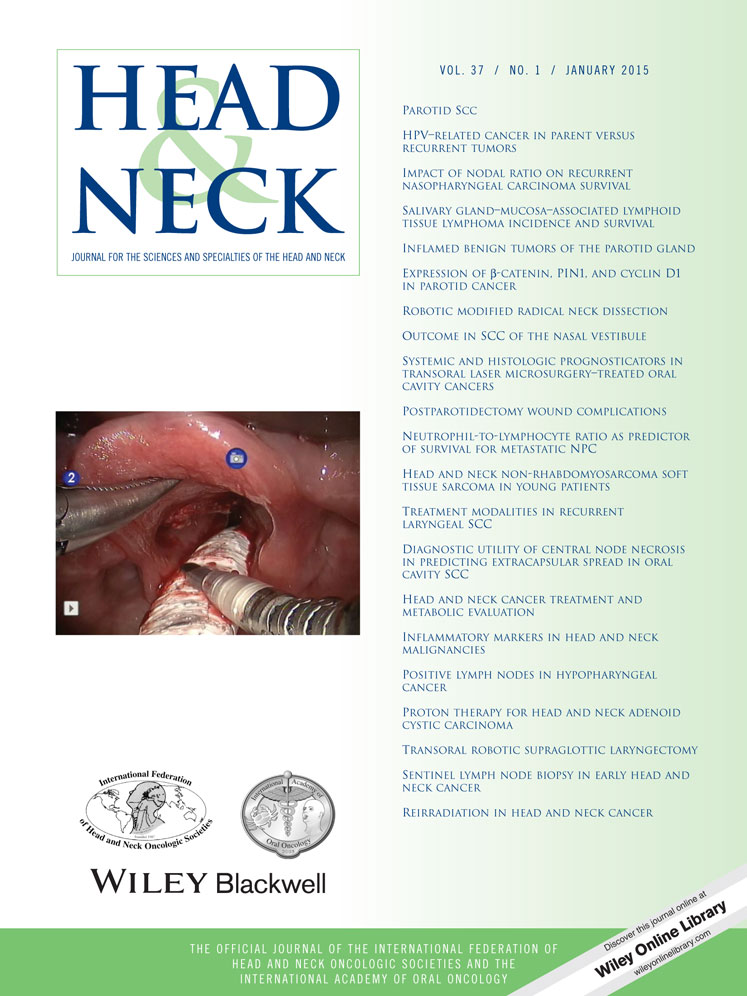Effect of number and ratio of positive lymph nodes in hypopharyngeal cancer
Abstract
Background
The number and ratio of positive lymph nodes are important prognostic factors in gastric cancer, but there is little data reported in hypopharyngeal cancer.
Methods
Medical data from 81 patients with hypopharyngeal cancer undergoing radical hypopharyngectomy and cervical lymph node dissection were reviewed.
Results
The median survival time was 84, 54, 30, and 13 months in patients with N0, N1, N2, and N3, respectively, and 84, 51, and 17 months with positive lymph node ratios (N ratio) 0, <10%, and >10%, respectively. Of the 24 N1 patients, the 20 patients that had an N ratio <10% had a better prognosis than the 4 patients with an N ratio >10%. Similar data was seen for the N2 patients. Tumor (T) classification, adjuvant therapy, and N ratio were independent prognostic factors in multivariate analysis.
Conclusion
The positive lymph node ratio is complementary to the current N classification system. © 2014 Wiley Periodicals, Inc. Head Neck 37: 111–116, 2015




